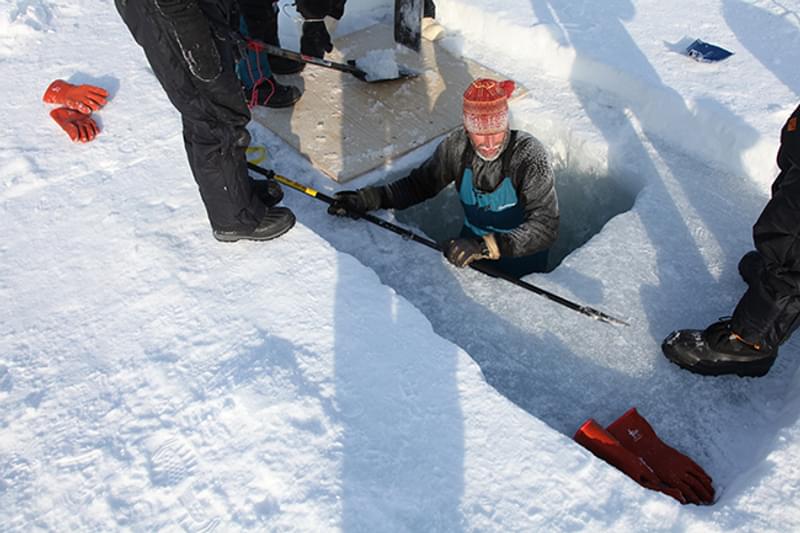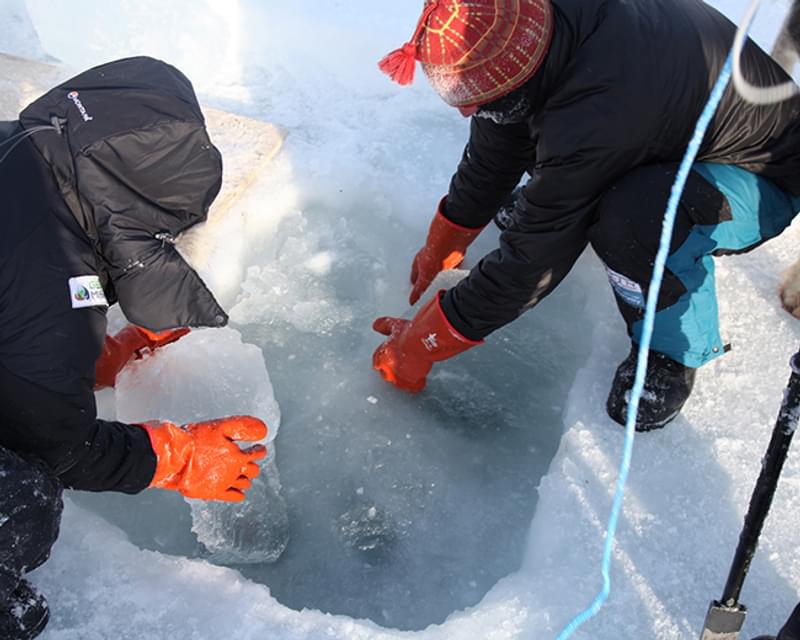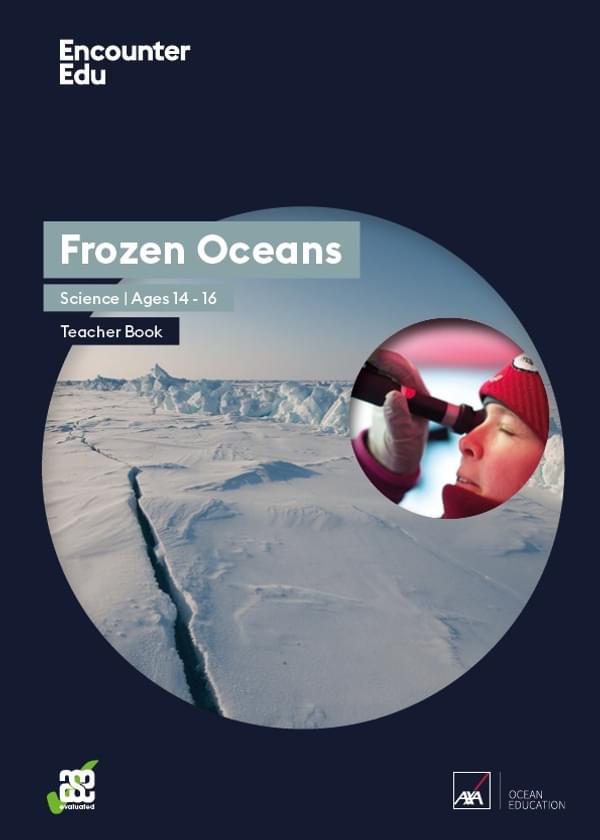Learn more: How are ice holes made in the high Arctic?
 Catlin Arctic Survey
Catlin Arctic Survey
All of the scientists here need ice holes to collect various types of samples using an array of instruments. The kind of data that are being collected are temperature, salinity, pH (acid level), light absorption and small marine organisms.
The seawater at the surface is the coldest, about -1.7C. Seawater doesn’t freeze until -1.8C, as the salt in the water acts in the same way as the grit and salt put on roads and pavements to keep them ice-free during the winter.
Ice sampling holes need constant maintenance and the first task each morning is to chip away the ice forming round the edges and sieve away the slushy ice skin that has formed overnight.
There are four sampling holes at the Catlin Ice Base of different shapes and sizes. Here are some photos I took when I first arrived of one of the most important tasks at the base.
 Catlin Arctic Survey
Catlin Arctic Survey
 Catlin Arctic Survey
Catlin Arctic Survey
